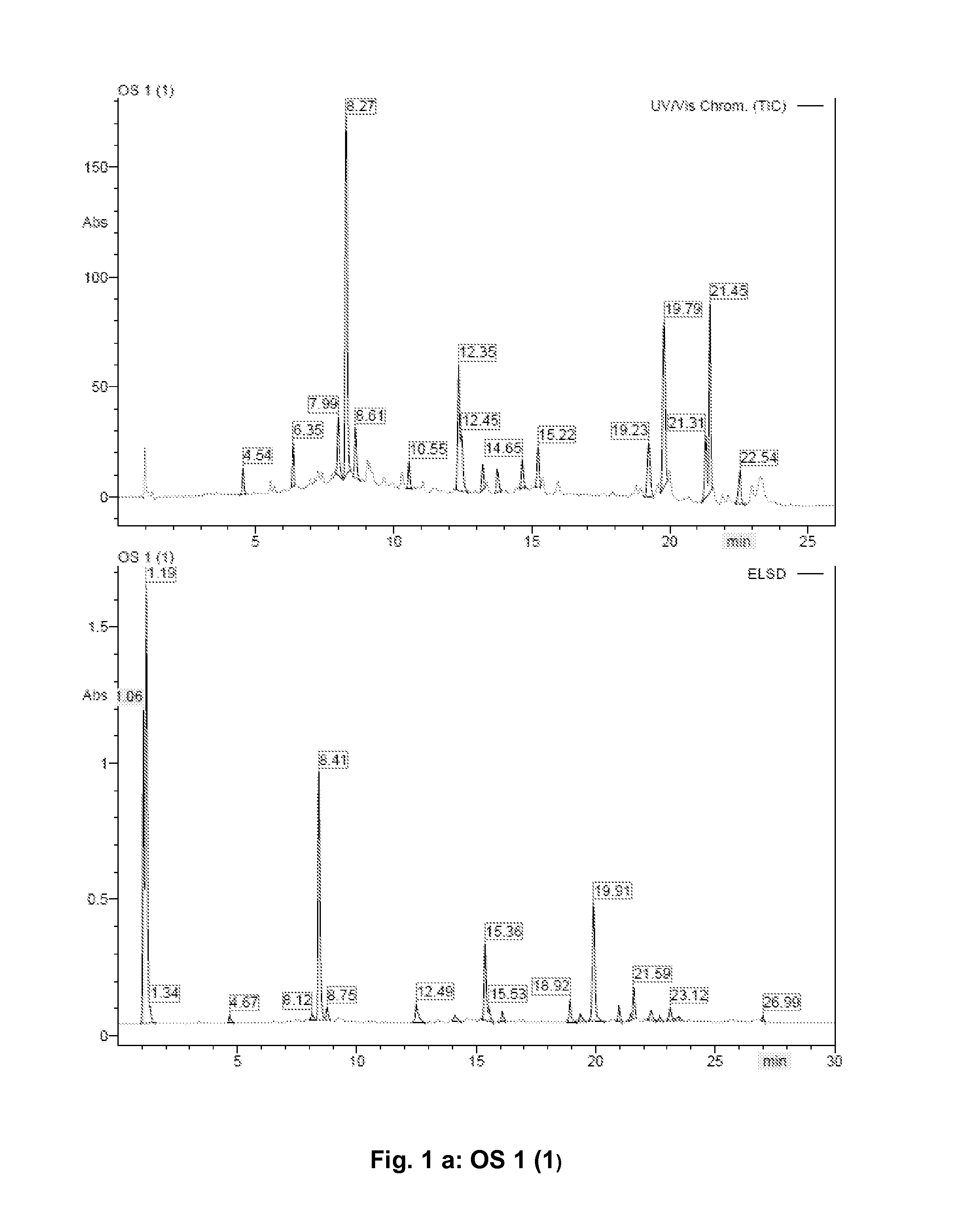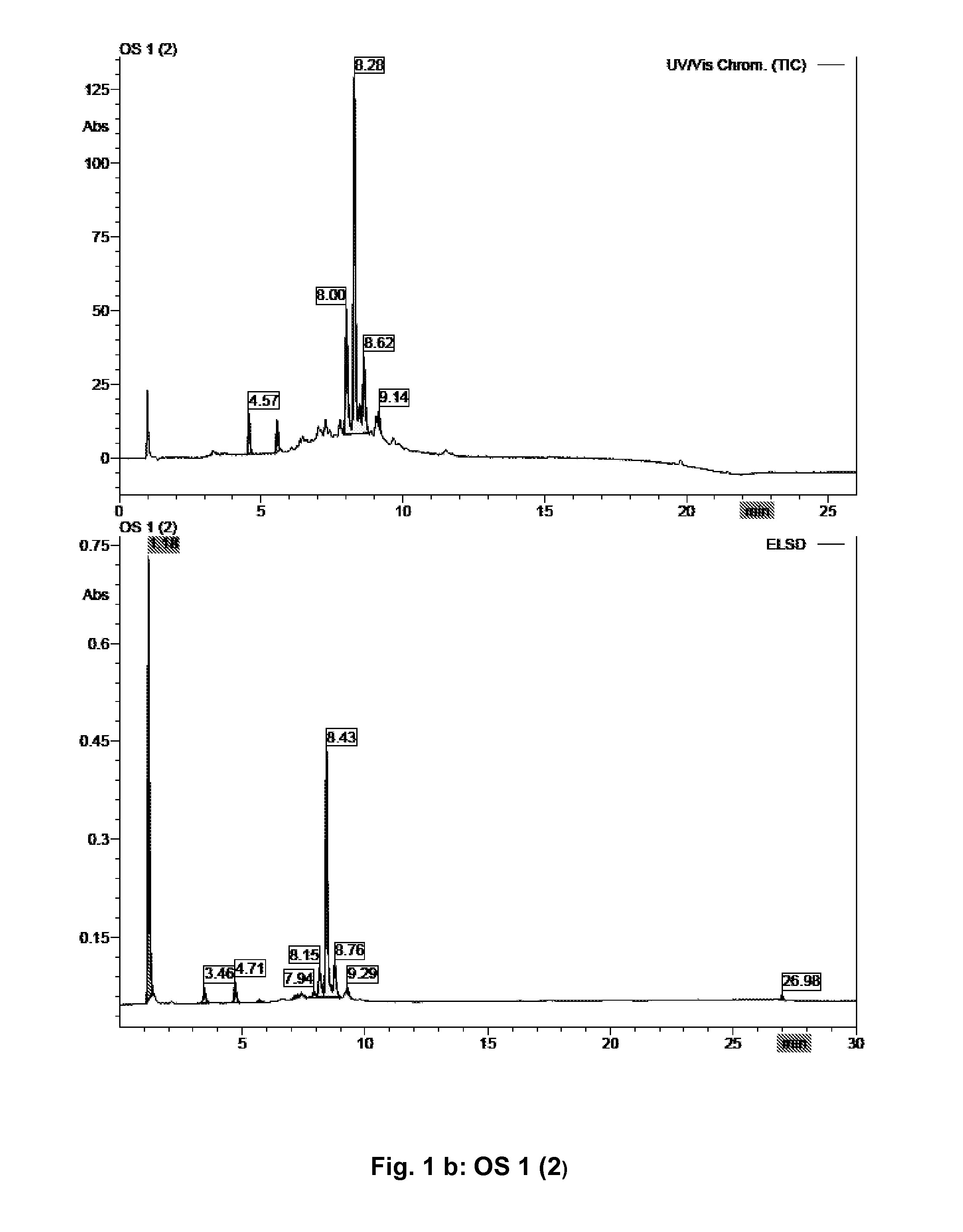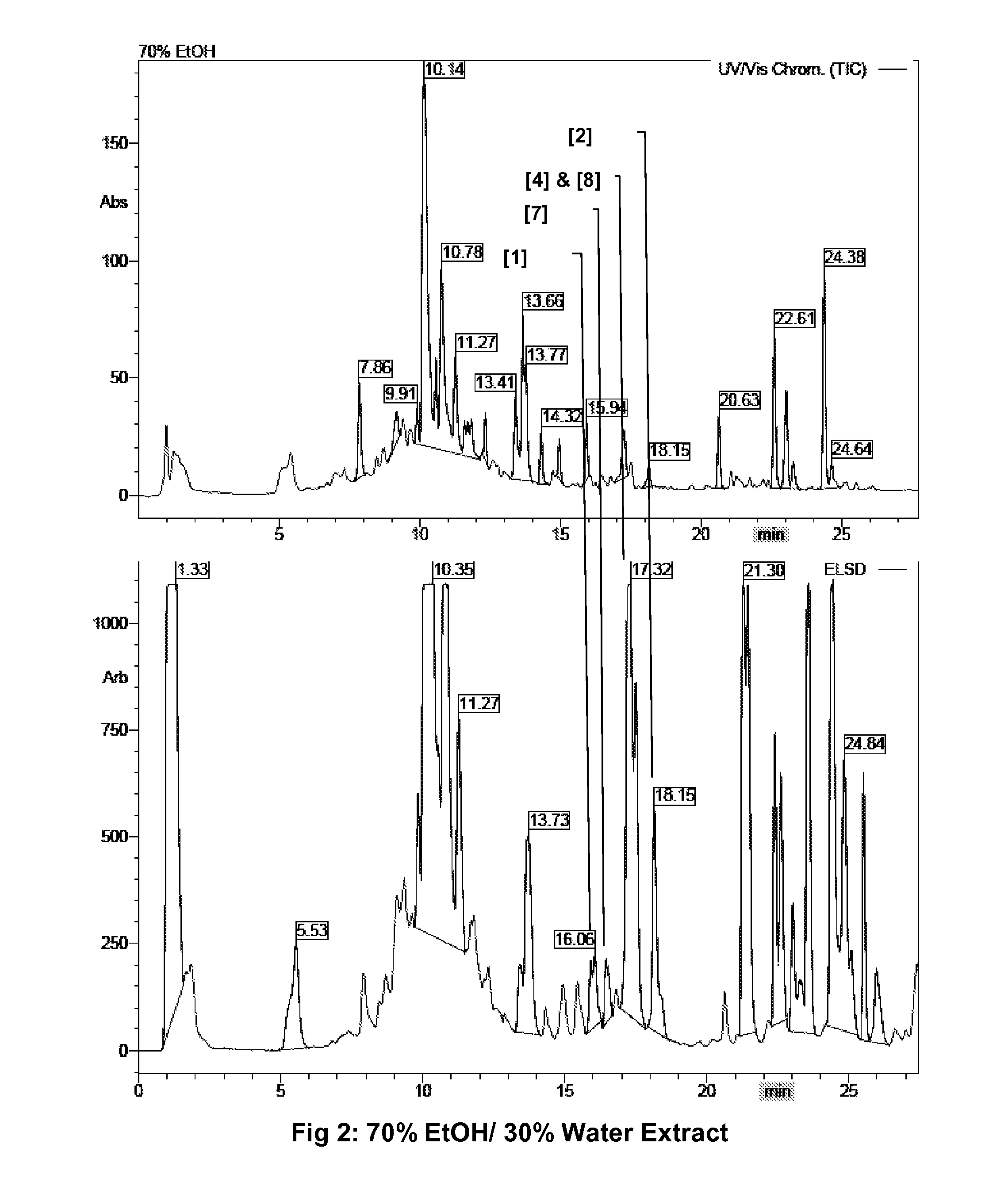Orthosiphon stamineus extracts for use as a cognition enhancer
- Summary
- Abstract
- Description
- Claims
- Application Information
AI Technical Summary
Benefits of technology
Problems solved by technology
Method used
Image
Examples
example 1
Preparation of Crude Extracts
[0095]2000 g of Orthosiphon stamineus leaves (commercial product: Galke, Gittelde / Harz, Germany) (OS 1) were ground into a fine powder using a lab mill (Retsch ZM200, Haan, Germany) and were extracted afterwards at room temperature twice for 30 min with 6.500 ml each of 70% ethanol in water (v / v) using ultrasonic treatment. The solution was separated from the remaining material. The organic solvent was removed under reduced pressure at 40° C. The remaining water phase was adjusted with water to a final volume of 2000 ml and subsequently extracted four times with 2000 ml each of ethyl acetate by liquid / liquid separation. The four ethyl acetate extracts were combined (combination called OS 1 (1), with OS standing for Orthosiphon stamineus as source), dried (Na2SO4) and the solvent evaporated under reduced pressure at 40° C. The remaining water phase (OS 1 (2)) was also evaporated under reduced pressure at 40° C. and the yields of dried extract were determi...
example 2
Preparation of Pure Compounds
[0099]The path information, giving the details for the overall isolation process, is given in Table 2. The initial separation step (procedure 1) was performed as MPLC separation on reversed phase material in multigram scale allowing to separate most of the matrix from the analytically detectable compounds. For all subsequent separations in preparative scale, a HPLC-setup was used comprising reversed phase separation columns with capacity for up to 200 mg material per separation. The gradients for elution were chosen according to the separation problem (table 3). Generally the systems were based on Water / Acetonitrile mixtures. On a case-wise basis, the final separation step for the isolation of pure compounds was performed on a PS1 column (Molecular filtration Chromatography, column provided by Merck, Darmstadt, Germany) using Acetonitrile as solvent under isocratic conditions. Every fraction was dried (at 40° C. temperature setting) by using a vacuum con...
example 3
Food Compatible Extract
[0107]1 kg milled leaves of O. stamineus (same material and procedure as in example 1) were extracted twice with 2 l and 1.5 l ethanol-water 70:30. After filtration the ethanol-water extract was evaporated to dryness and the yield was determined to 128.3 g. For quality control, a 100 mg / ml sample in methanol was subjected to HPLC-UV-MS-ELSD analysis (FIG. 2)
TABLE 5quantification of compounds, calculated from the UV absorptionafter calibration of the HPLC with pure compounds[Cmpd No.]Peak area UVContent [mg / kg leaves][1]0.302~250[7]0.352~300[4]3.7281951.36[8]0.352316.84[2]0.935548.63
PUM
| Property | Measurement | Unit |
|---|---|---|
| size | aaaaa | aaaaa |
| size | aaaaa | aaaaa |
| weight | aaaaa | aaaaa |
Abstract
Description
Claims
Application Information
 Login to View More
Login to View More - R&D
- Intellectual Property
- Life Sciences
- Materials
- Tech Scout
- Unparalleled Data Quality
- Higher Quality Content
- 60% Fewer Hallucinations
Browse by: Latest US Patents, China's latest patents, Technical Efficacy Thesaurus, Application Domain, Technology Topic, Popular Technical Reports.
© 2025 PatSnap. All rights reserved.Legal|Privacy policy|Modern Slavery Act Transparency Statement|Sitemap|About US| Contact US: help@patsnap.com



